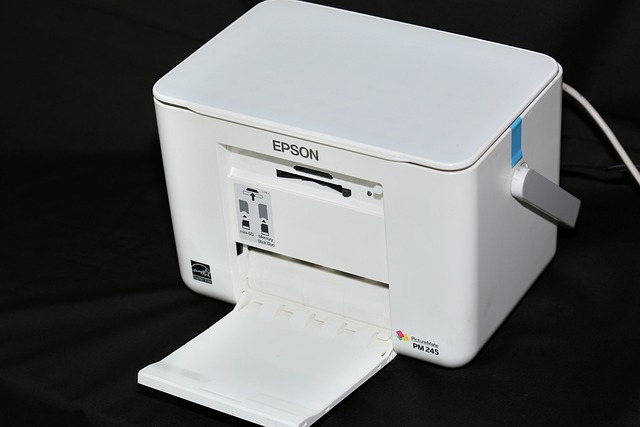Power management and battery care for compact printing setups
Effective power management is essential for compact printing setups used in mobile work, travel, or small office environments. Knowing how to care for batteries, optimize wireless and Bluetooth connectivity, and adapt firmware and setup settings can extend runtime and protect device health. This article covers practical steps to maintain battery performance and reliable printing on the go.

Compact printing setups rely on a balance of hardware, settings, and routine care to deliver consistent results while running on battery power. Whether you carry a small thermal photo printer for travel or a wireless ink device for office documents, understanding battery chemistry, charging habits, and connectivity behavior reduces downtime. This article outlines actionable practices that help preserve battery health, optimize mobile printing performance, and ensure stable Bluetooth or wireless connections without sacrificing print quality.
How does battery type affect mobile printing?
Battery chemistry—lithium-ion being the most common in compact printers—determines charging patterns, typical lifespan, and safe storage. Devices built for mobile printing usually include cells optimized for energy density, which helps keep a device compact while delivering enough capacity for several document or photo jobs. Knowing the rated capacity (mAh) and nominal voltage helps set expectations for runtime. Avoid deep discharges when possible: frequent drops below 20% can stress cells over time. For travel use, choose a model whose battery specifications match your expected daily printing volume and check whether the design supports replaceable batteries for longer-term flexibility.
What power settings help with wireless and Bluetooth printing?
Wireless and Bluetooth radios consume significant energy, so adjusting connectivity behavior can extend battery life. Use sleep or power-saving modes that disable radios when not actively printing. For Bluetooth printing, prefer BLE (Bluetooth Low Energy) profiles where available, and limit background scanning in mobile or laptop devices to reduce constant radio activity. Configure automatic disconnect thresholds in the printer firmware or companion app to prevent the device from maintaining unnecessary persistent connections. When printing large batches of documents, keep wireless connections active to avoid repeated reconnections, which can spike power draw during handshakes and authentication.
How to optimize battery life for travel and compact setups?
Before travel, calibrate the battery by charging to near-full and performing a moderate discharge cycle; this helps some battery management systems estimate remaining capacity more reliably. Carry a lightweight power bank that matches the printer’s input voltage or supports USB-C PD if the device allows external charging. Minimize high-power operations—multiple photo prints or high-resolution thermal jobs consume more energy—by batching prints and reducing print density where acceptable. Store printers in cool, dry conditions during transit and avoid leaving batteries at full charge for prolonged periods in hot conditions, as heat accelerates capacity loss.
What care tips apply to thermal, ink, and photo printing batteries?
Different printing technologies have distinct power profiles. Thermal printers generally draw steady power during heat cycles when forming an image; frequent short prints can be less efficient than queued jobs. Ink-based portable printers often need energy for ink priming and head maintenance, so sporadic use may result in additional battery drain for head cleaning cycles. Photo printing typically demands higher energy for color processing and longer print times. Regular maintenance—cleaning heads, using recommended media, and updating firmware—reduces the chance of repeated retries that waste battery life. Also, avoid leaving ink printers idle with active maintenance cycles enabled unless necessary.
How do firmware, setup, and connectivity practices impact battery health?
Firmware updates can include power-management improvements, so keep devices updated following manufacturer guidance. During setup, disable unnecessary features like constant beaconing, auto-update checks, or high-frequency status reporting that keep the device awake. Configure print spoolers and mobile apps to send full jobs rather than frequent small jobs that require repeated wake-ups. When possible, use wired connections (USB or direct serial) for heavy printing sessions to offload wireless radio power use. Monitor battery-health indicators in device apps to detect declining capacity early and plan replacements or service.
What office workflow and document strategies save power in compact printers?
Adopt document and workflow choices that reduce energy consumption: set duplex only when appropriate, lower print resolution for internal drafts, and use grayscale for text-heavy documents. For mobile or field teams, create templates sized to the printer’s native resolution to avoid frequent scaling or rasterization, which increases processing time and power use. Maintain a small inventory of key consumables—ink cartridges, thermal paper rolls—and match paper quality to the job to avoid reprints. For photo jobs, batch similar color profiles together to minimize warm-up and calibration sequences that add to battery drain.
Compact printers are powerful tools when you understand how battery care, connectivity choices, and firmware settings affect real-world performance. Routine maintenance, sensible charging habits, and thoughtful workflow adjustments prolong battery life and ensure more reliable mobile and office printing. By combining hardware-aware practices with smart setup and app configurations, users can get consistent results from compact, wireless devices across travel, photo, and document tasks.





